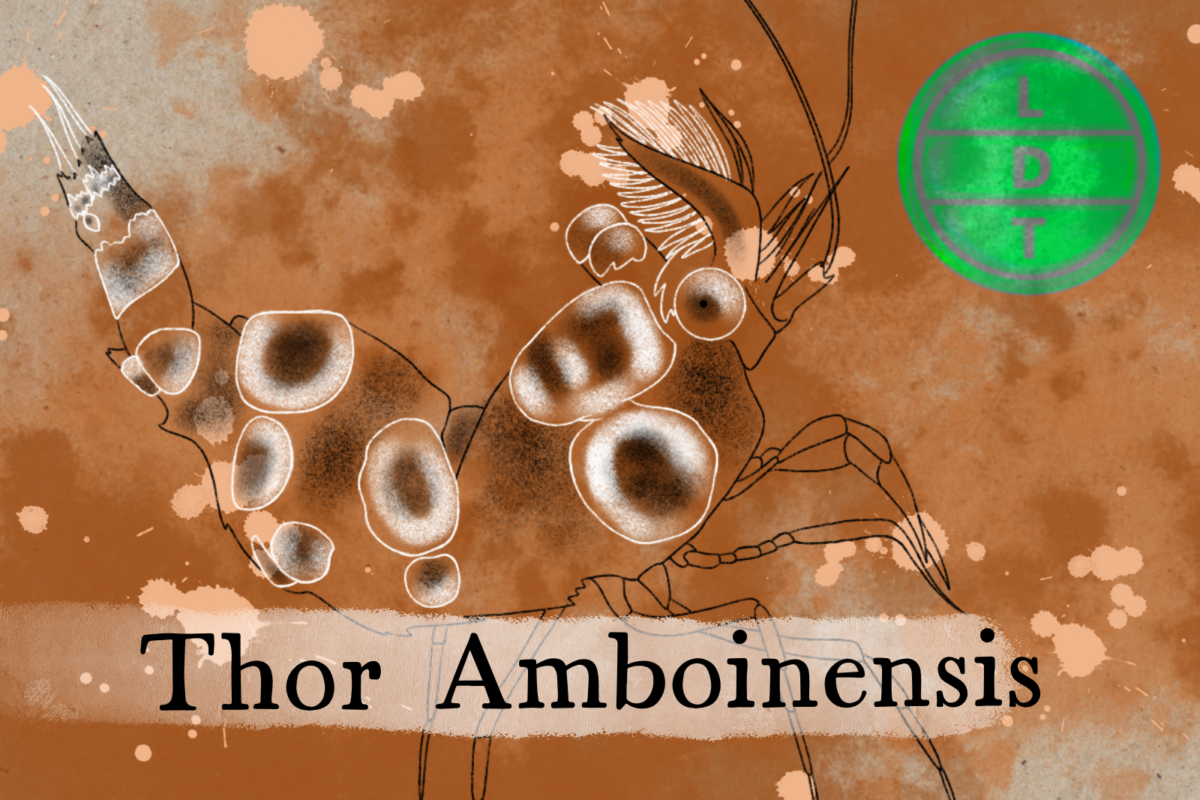“…and today we’re talking about a sea creature that somebody at some point apparently thought was quite attractive. But more on that later.”
The coral reefs of the shallow tropics are home to a wide variety of dazzling displays, but none so alluring as the vibrant dance of the sexy shrimp. From its colorful home nestled safely in the arms of its anemone partner, the sexy shrimp tangoes, flamencos, and meringues. But feeling the rhythm of the night is all part of survival here in Life, Death, and Taxonomy.
Description
- Like many sea creatures the look of the squat shrimp is utterly alien.
- If you’ve seen a shrimp not ready to be dipped in cocktail sauce, it is that generally shape.
- But they are bright orange, with bright white spots.
- The spots are lined with a bright blue ring.
- Their little shrimp tails are narrow and placed on a thick abdomen.
Measure Up
Welcome to the beloved Measure Up segment. The official listener’s favorite part of the show! The part of the show when we present the animal’s size and dimension in relatable terms through a quiz that’s fun for the whole family. It’s also the part of the show that’s introduced by you when you send in audio of yourself saying, singing, or chittering the words Measure Up into ldtaxonomy at gmail dot com. We don’t have a new Measure Up intro.
Length
- 13 millimeters (0.5 in)
- How many squat shrimp go into the mother of the heaviest baby born on record?
- Hint: The heaviest baby born was 22 pounds (9.98 kg) and 28 inches. His mother was Anna Haining Bates, who the Guinness Book of World Records calls a giantess. The baby was born in January of 1879.
- 190 shrimp. The mother of the baby was 7’11” (241.3 centimeters)
Genus size
- There are 12 members of the genus thor.
- What is the difference in the percentage of the genus Thor that is made of squat shrimp and the percentage of the earth’s terrestrial land that remains relatively untouched by humans?
- Hint: There is a lot of debate about this and the numbers may vary based on the specifics of the question. How much is wild? How much is untouched? How much is modified? Modified land could include buildings, transportation infrastructure, agricultural land, mines, quarries, power plants, logging, and human intrusion, which is basically all areas around population centers that humans access. It also includes areas affected by acid rain and fog caused by pollution. Because environmental politics are so charged, the answer to this question is at risk of being agenda-biased. For our purposes, we are just talking about lands without human populations or substantial land use.
- The difference is 4.17. According to a 2020 study using global human influence maps, 50% of the earth remains relatively untouched.
Fast Facts
The Squat shrimp lives in the Red Sea, the Indian Ocean, the Pacific Ocean, the Caribbean Sea, the Gulf of Mexico, Madeira, and the Canary Islands.
Female squat shrimp carry fertilized eggs beneath her abdomen until they are ready to hatch.
In general, shrimp eat bacteria, zooplankton, algae, and decaying detritus.
“When excited it stretches its tail up and waves it about, hence the name sexy and dancing.”
Major Fact: Twerking Hard or Hardly Twerking
- Thor amboinensis establishes a commensal bond with another invertebrate, typically a sea anemone or mushroom coral found in shallow waters. In Bermuda, the commonly chosen hosts for this species are the carpet anemone, the stinging anemone, and the adhesive anemone.
- One or more shrimps reside within the host’s tentacles, consuming the tentacle tissue and the planktonic particles trapped in its mucus.
- The shrimp’s poop may serve as nutrients for the anemone
- Although, the shrimp do need to gradually acclimate to the anemone, otherwise it will get stung and eaten
- In the Bahamas, Thor amboinensis is a part of a group of symbiotic invertebrates associated with the anemone Lebrunia danae.
- Each shrimp, crab, and brittle star occupies its specific area within the sea anemone, while Thor amboinensis remains concealed deep among the pseudotentacles.
Ending: So turn on your KC body lights, find a cozy codependent—I mean symbiotic relationship—and dance the cnidarian away like the sexy shrimp here in LDT.

